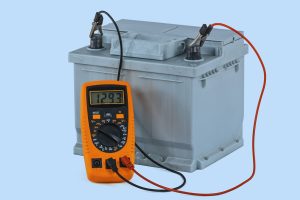How have NFPA 70E 2024 battery safety requirements changed?
Overview
Batteries are electrochemical devices designed to store and deliver electrical energy via chemical reactions. Although crucial for powering various devices, they carry inherent risks such as short circuits and thermal runaway, which can lead to fires and explosions, particularly when exposed terminals are touched. NFPA 70E Section 320.3 establishes safety standards for batteries, with the 2024 version introducing additional precautions. These include measures to avoid exposure to DC power exceeding 100 Volts and 40mA, as well as thermal energy equivalent to 1000 watts of short-circuit power. These updates aim to enhance end user safety by mitigating risks when working on battery systems.
exposed terminals are touched. NFPA 70E Section 320.3 establishes safety standards for batteries, with the 2024 version introducing additional precautions. These include measures to avoid exposure to DC power exceeding 100 Volts and 40mA, as well as thermal energy equivalent to 1000 watts of short-circuit power. These updates aim to enhance end user safety by mitigating risks when working on battery systems.
Applying the 2024 Code
When a battery is connected to an external circuit, electrons move from the negative electrode to the positive one, producing an electrical current that powers different devices. While batteries are vital for various applications, they also carry potential dangers, especially when individuals touch their exposed terminals. Common risks related to battery work include short circuits and thermal runaway, which can result in fires, electric shocks, and explosions. These hazards escalate with the voltage and current rating of the battery and become inevitable if these parameters exceed certain thresholds. These thresholds are referred to as the electrical hazard threshold of the battery.
In earlier versions, NFPA 70E Section 320.3 outlined safety requirements for batteries and battery rooms. One such requirement, found in Section 320.3(A)(1), prohibited end users from interacting with systems exceeding specific electrical hazard thresholds for AC and DC systems: AC power exceeding 50 volts and 5 mA, and DC power exceeding 100 Volts respectively. Exposure to such voltages and currents without proper controls can lead to serious injuries, even death. In the 2024 version, this section underwent revision to include additional battery-specific safety measures. These include avoiding exposure to DC power exceeding 100 Volts and 40 mA, as well as thermal energy equal to or greater than 1000 watts of short-circuit power. These additional requirements aim to enhance end-user safety by preventing exposure to electrical hazards when working with exposed systems like batteries and battery rooms.
What’s New for the 2024 NFPA 70E?
The table below presents a comparison between the 2021 NFPA 70E and the 2024 NFPA 70E regarding Section 320.3(A)(1).
2021 NFPA 70E |
2024 NFPA 70E |
| 320.3(A)(1) Energy Thresholds.
Energy exposure levels shall not exceed those identified in the following list unless appropriate controls are implemented: (1) AC: 50 volts and 5 milliamperes (2) DC: 100 volts Informational Note: This information is extracted from the Department of Energy (DOE) Electrical Safety Handbook, DOEHDBK-1092. |
320.3(A)(1) Electrical Hazard Thresholds.
Exposure levels shall not exceed those identified in the following list unless appropriate controls are implemented: (1) AC: 50 volts and 5 milliamperes (2) DC: 100 volts and 40 milliamperes (3) Thermal: 1000 watts short-circuit power Informational Note No. 1: Available short-circuit power is calculated by multiplying the battery’s nominal voltage by its available short-circuit current at the battery terminals then dividing the result by two. Informational Note 2: See Department of Energy, DOE Electrical Safety Handbook, DOE-HDBK-1092, for electrical hazard thresholds. |
